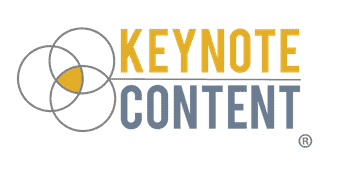Whether you’re a speaker, coach, consultant, trainer, or any other type of subject matter expert, there’s a good chance you’re experiencing a quieter-than-normal inbox right now. Your audience didn’t vaporize — they’re still looking for you. The difference is that what you’re offering likely isn’t what they’re wanting or needing right now.
At least, not yet.
This is a remarkable opportunity for you to serve more people with a life-changing message. The challenge is that the online marketplace was already noisy before a global pandemic scurried us all home and glued our gazes to flickering pixels at every hour of the day and night. A word: it’s not going to get quieter.
How do you generate more sales faster when you needed sales yesterday?
I spent the past three-plus years working with over 1,100 business coaches and consultants and over 800 speakers one-on-one. What I’ve learned is how to generate more sales faster during a recession. It worked in 2008–2010 and it will work even better if done the right way over the next several weeks and months.
Before I share four concepts that I know work well, we need to be honest about where you’re at with building your audience online.
Which Type of Expert Are You With Your Audience?
No matter your industry, expertise, or niche, you’re likely one of three types of experts when it comes to engaging with your online audience:
- The Invisible Expert: “I haven’t focused on my audience online before now. How do I generate more sales? If I need to create more content, what type(s) of content may be best for me to create? How do I connect with the right crowd?”
- The ‘Treading Water’ Expert: “I’m already established online, but I need to generate sales faster to keep my business going and serving more people.”
- The Rising Expert: “I’m busier than ever — how do I stay at the forefront of my industry and serve my crowd the best way possible right now?”
Each of the four concepts below is a turnkey concept with action steps based on each of the different types of experts. A good approach may be choosing one of these concepts, mastering it as much as possible over the next two to four weeks, and then combining your mastered concept with a new concept.
Option 01: Create More Questions-Based Content Leading to a Call Scheduler
When the Great Recession of 2008–2010 hit, I was just starting work with copywriting and messaging. The speakers, coaches, and consultants who truly thrived during that time embraced the opportunity to lean into this ‘new’ trend of content marketing. It’s also when the next wave of influential voices found their footing.
Amazing podcasters launched during that time. Future who’s who of authors and presenters scribbled out their big ideas in between frequent visits to the unemployment office’s website. Entire industries found their origin on the back of cocktail napkins in the form of value propositions and manifestos that were crazy enough to work.
Fast-forward to today and the need for relevant, timely content may be greater than ever, even during the Great Recession. With social media usage up 35–52% across all major platforms, your audience is scrambling across their screens to ingest the insight you can offer today.
Creating relevant, consistent content includes:
- Choosing a content style: written, video (recorded), audio, and live audience (ex: Facebook Live).
- Dedicating time each day or at least once a week.
- Creating a solid piece of content.
- Maximizing that piece of content across several channels.
- Lather, rinse, repeat. No matter what level of expert you are, this approach will add value to your audience as long as you can get them to engage with your content. Lousy content or lousy delivery = no engagement. Great content and great delivery = great engagement.
If you’re ready to get better results with your message than ever before, start here.
Option 02: Pay What You Want
What’s your best-selling digital product? A book, a course, a training series? Congratulations, it’s now on sale. With the “Pay What You Want” approach, you offer a highly appealing digital product that’s normally under $100 in price at whatever price a buyer sets. It’s a digital product — it doesn’t cost you anything more, no matter the sales price. What’s important is that you’re matching their budget.
Now, there are some potential drawbacks to this concept. First, lowering the level of entry for someone to be a “customer” of yours means you may also be subsequently lowering the quality of prospect entering your business. Second, unless you frame this approach correctly, it can seem like you’re devaluing a product. The previous price will seem more arbitrarily set than priced by a discerning eye for value.
How you avoid the incorrect perception is by framing this approach in light of our current crisis. Instead of just price-slashing, you can rave about how much you believe in this product, how effective it’s been in the past, and how this move is designed to serve more people in your audience at a price anyone can afford to get the results they need.
Go into the e-commerce section of your website or funnel and set the price for a digital product as a PayPal link. They can send you however much they want through PayPal. Once the order is received, then you can email them the access link through your system. That means they’re no longer a ‘lead’; they’re a customer. More importantly, you’re getting a great product out to more people so they can get the results they want and need while your business keeps growing.
Option 03: Turn Survey Results Into a New Digital Product
When was the last time you asked your subscribers or fans what they would like to see from you? Use an online survey (try surveymonkey, TypeForm, or GoogleForm) asking them what their top questions, challenges, or concerns are right now that are specific to your area of expertise.
Then, study the results and look for patterns because people leave patterns. Identify the top three trends and see if you can create a training or series of trainings based on the survey results. One of your survey questions could be as straightforward as, “If I created an on-demand training that will be ready in the next week, which of these three topics is most appealing to you?”
Creating a digital product is easier than ever right now. Use PowerPoint or Apple Keynote (a personal favorite) to create a slidedeck. Keynote allows you to do a voiceover recording on a slidedeck and then save that file as a video file. You can also Zoom to record a video of yourself doing a training. Once recorded, you can bundle it as a series of videos or just one video that’s password-protected and offer that video to your subscriber list for a set price. They can PayPal you the admissions price, as it were, and you can then send them the link and the password.
If you’re ready to get better results with your message than ever before, start here.
Option 04: Monetize Your Expertise With Coaching and Consulting Calls
A majority of our client base features a wide variety of established and rising speakers. With virtually zero in-person events happening in the near future, speakers are struggling to replace lost speaking fees at conferences, workshops, and other offline stages.
We quickly transitioned our speaking clients to use a combination of a scheduling link with payment integration. I recommend using Calendly and a Zoom account. Calendly handles payments securely through Stripe and the purchaser receives the Zoom access link once you receive their sign-up info and payment receipt.
You likely already have a Zoom account, which limits calls to 40 minutes for free accounts. The freemium version to do virtually unlimited call lengths is only $14.99 a month. Calendly also has a robust free version and a paid version that’s only $10 a month. You don’t need a paid version of either option to make this concept work.
When someone wants to sign up, they can fill out five to 10 intake questions, enter payment, and you’re already paid before they even hop on the call with you. Treat it like any other in-person coaching or consult call and know you don’t have to send any invoices or receipts because Stripe is already designed to do that for you.
Value People Over Profit and You Will Always Win
How do you prove you value your audience more than their bank accounts? By obsessing over giving value in advance. Don’t offer a solution unless you know you can help them get the results they need during this time.
You have this opportunity to help people get those results and also keep your business growing. Of course, some people may already be shoveling shame your way with words like, “You shouldn’t make sales at this time. We’re in a recession. COVID-19 is here and people are dying right now. Shame on you for making money during this time.”
Unless you make money, you’re not going to have a business. Without the freedom to share your message, there’s limited opportunity to make an impact and serve more people.
There are people in this world who are craving your message right now. They need to know that what you have to offer will help them have a more meaningful future. Unless you share your message, unless you ask them to give you the unadulterated truth about the problems, questions, and concerns they’re facing, unless you take the time to focus on serving your audience…you cannot reasonably expect to make an impact.
With these concepts, you can get the momentum and results you need for yourself and your audience, even if everything seems too daunting or unpredictable. Yes, you have what it takes and I’m here cheering for you to succeed today.
If you’re ready to get better results with your message than ever before, start here.

